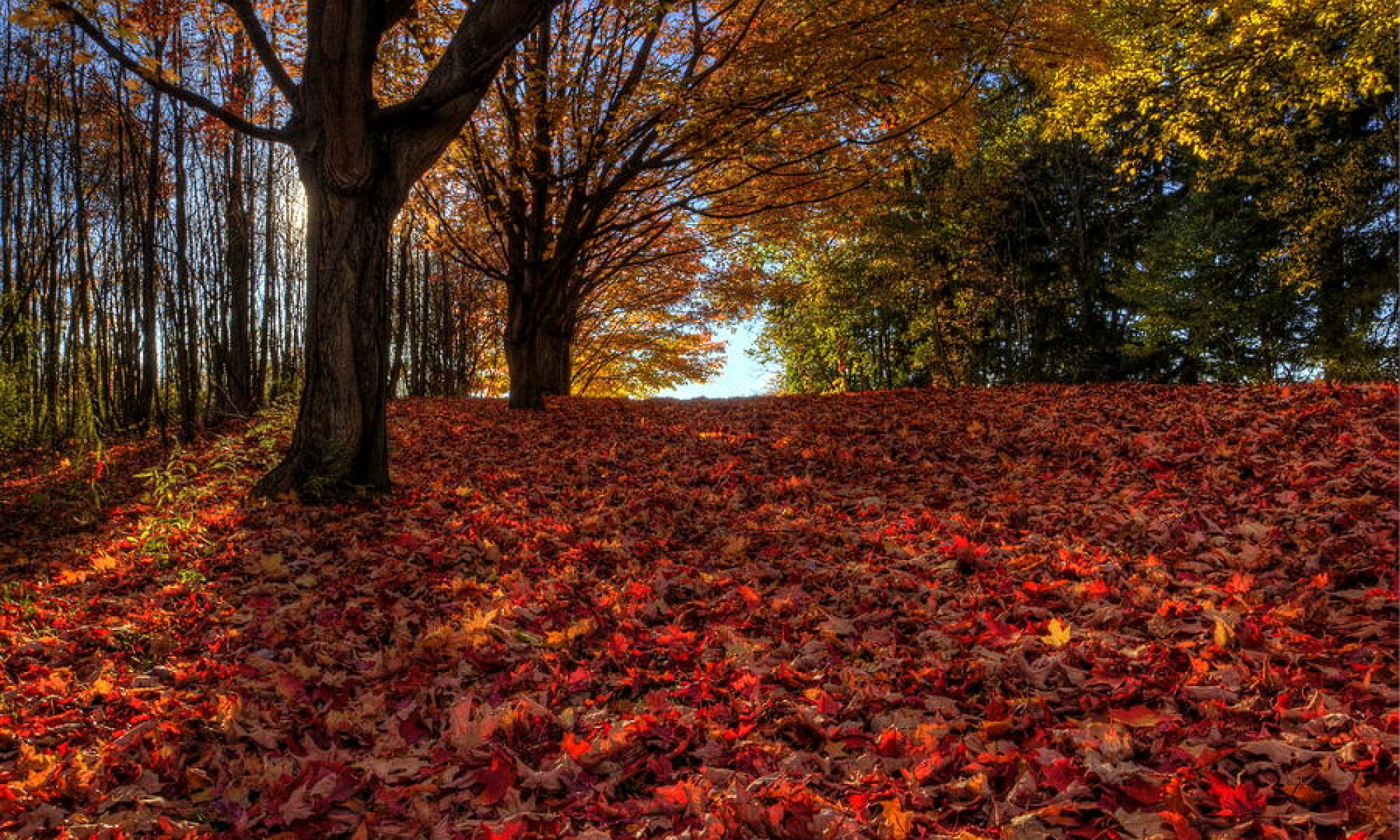
The Boxelder has trifoliate compound, lobed leaves. They are broadleaf and opposite arranged, they’re twigs are green with rounded with white woolly buds.It is a fast-growing and short-lived tree that can only live around 60 years, 100 if it is in the best conditions possible.
This tree was in the forest lining in the Olde Sawill Park with a lot of thick brush and trees. it was in a well lit and sunny condition with even ground.
Something that I didn’t realize was that the Boxelder tree is actually a type of Maple tree. The Boxelder tree is what is known as drought-resistant, in that it has the ability to retain water in case that it does not come into contact with water for an extended period of time.
This tree actually started me. For the longest time I associated a three leaved plant with poison ivy, and when I had actually grazed against it, so I started to panic and began to think just got poison ivy.
Silver Maple Tree, Acer saccharinum L.
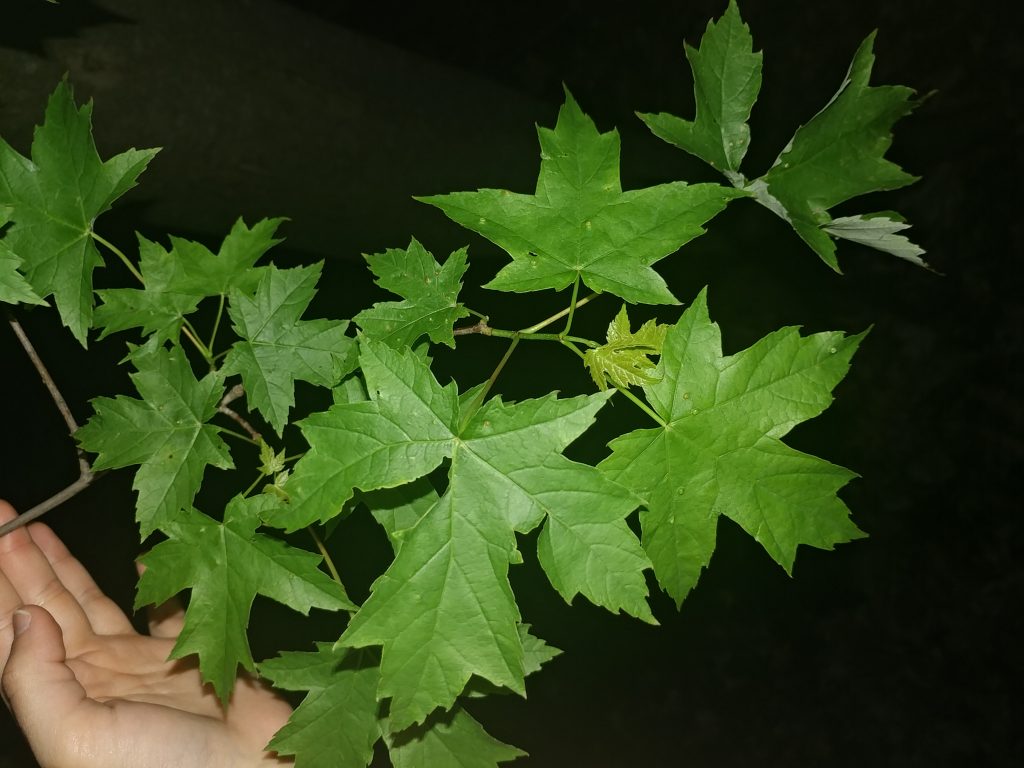
The Silver Maple tree has broad leaves that are arranged in an opposite pattern on the branches. The structure of the leaves are simple with lobing. They tree gets it’s name from the silvery color on the bottom of the leaf. The leaves usually have around 5 lobes and they turn yellow in the fall.
This tree was actually found outside of the wetland area and I happened to see it as I was entering by the parking lot. The tree was not near any other tree and it seemed to be at least 30 ft. from any other tree, where the others seemed to overlap each other.
Something that I learned about the tree’s ecology was that it is one of 125 species in its family and that it has a wide variety of habitats that it can live in. It is one of 13 species that can be found across North America.
https://www.lakeforest.edu/academics/programs/environmental/courses/es203/acer_saccharinum.php
This tree was easily recognizable as a maple, but I did not realize the variety, and it was not till I consulted my field guide that I realized there was more than one maple tree an I could have easily passed many more species.
Green Ash Tree, F. pennsylvanica
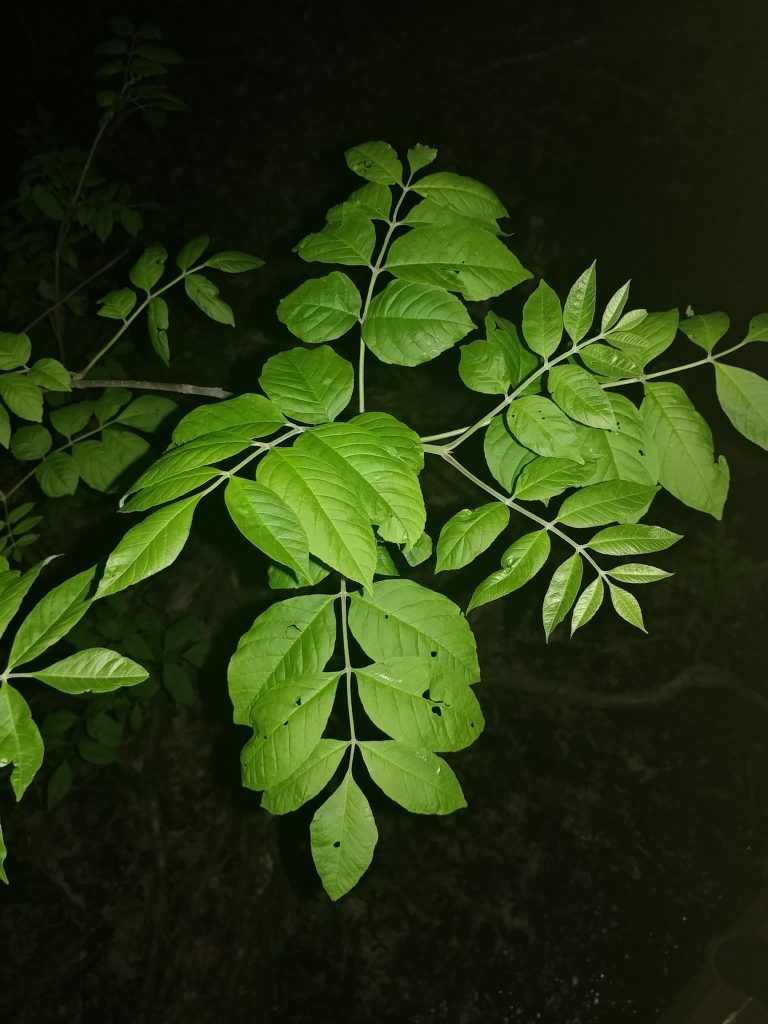
The Green Ash tree is broad leafed and are arranged opposite each other. Its structure is pinnately compound, and can be rounded or flat. It’s leaves are not lobed, but they are toothed. The serrated edges are not large and line both sides of the leaf.
The Green Ash tree that i saw had a couple of birds nests in it and it looked like many of the leaves were eaten by small insects. I couldn’t be sure if there was an infection in the tree or if it was an insect burrowed into the leaves, but on some of the leaves there was small, scattered, upraised mounds on the leaves.
These leaves looked like many other leaves on trees that I passed pretty often and as time went on I found it harder and harder to tell if it was the same tree or a new kind. Some of the trees looked smaller but also very similar and couldn’t tell if it was just a younger version and that is why it looked different or if it was a different tree.
Chokecherry, Prunus virginiana
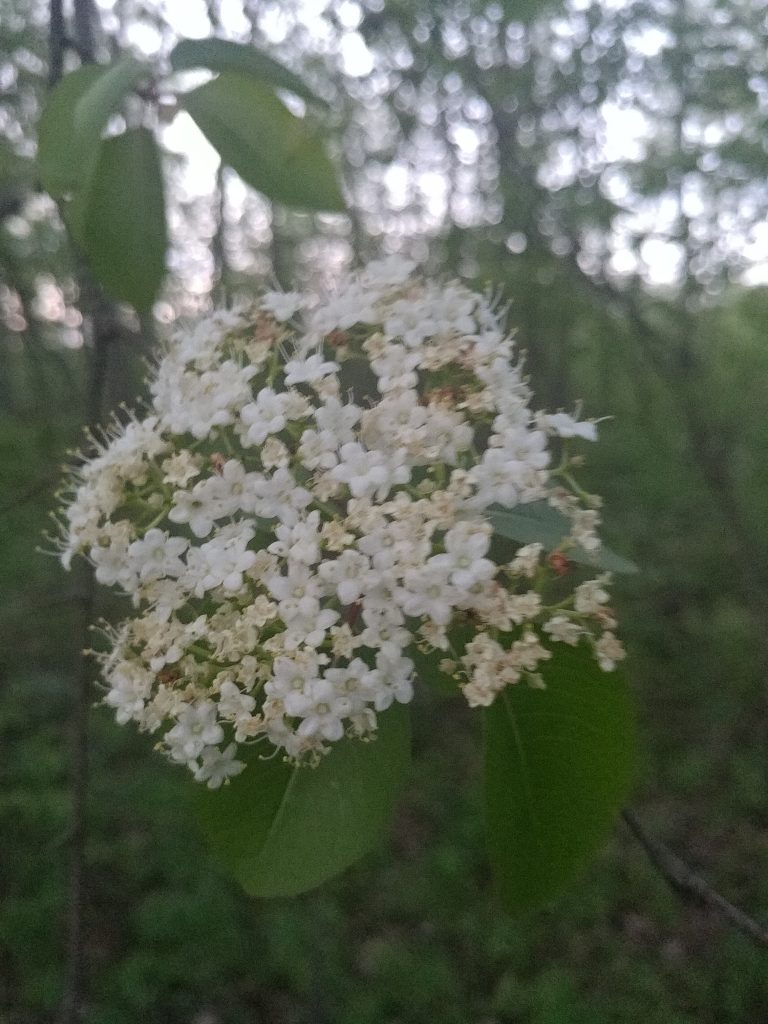
The Chokecherry leaves alternate on the form in an egg shape to a point at the tip. Leaf edges are lined with teeth very finely and point outward away from the leaf. The leaves are usually 2-5 inches long and 1-2 inches wide. The Chokecherry can be found near roadsides from the seeds being dispersed by birds and other small animals that feed on the small berries.
This Chokecherry was along the dense colonies tree lining with the other dense trees. I did not see any other Chokecherries when I was walking through the park so I’m not sure if the wetlands is somewhere that you would normally find it or not.
“Chokecherry is used extensively in shelterbelts, windbreaks, wildlifehabitat and mass plantings for erosion control.” Because of the trees ability to form thickets, it is used as a source of erosion control.
-https://www.nrcs.usda.gov/Internet/FSE_PLANTMATERIALS/publications/kspmcpg5596.pdf
I really liked this tree and I liked how nice it smelt. I personally think that they smell nicer than dogwood trees, which smell like fish, but I don’t think they were prettier. I had to go through a lot of pictures of trees with small white flowers and I wasn’t even sure if the tree I saw truly existed or if I had dreamed it, because of how hard it was to find another tree that looked like it.
American Basswood Tree, Tilia americana
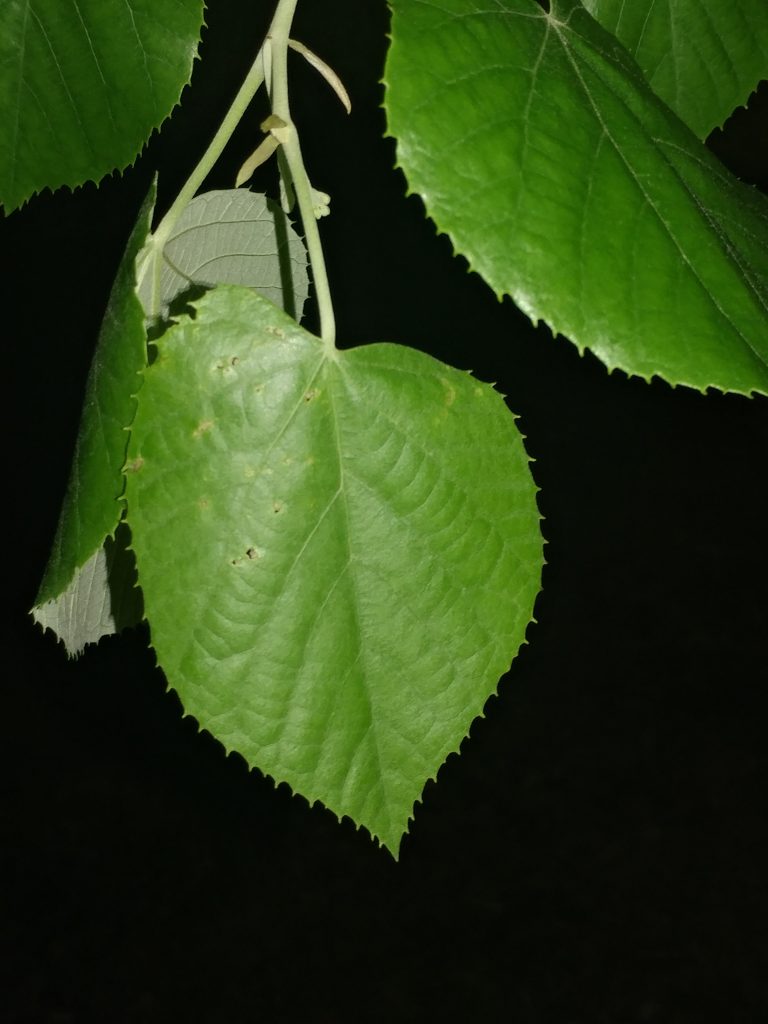
The leaves of the American Basswood Tree are arranged alternately with broad leaves that have a simple complexity. The margin of the leaves are broad, not lobed, and toothed. The shape of the leaves are slightly lopsided and heart shaped. They also have long petiole.
This tree was located a little off of wetlands on the solid ground but still within 100 ft. of the pond.
What I had previously not known that this tree is a common food source for many kinds of animals. When the flowers bloom, they are a source of pollen for bees, rabbits and squirrels eat the bark of the tree, and caterpillars eat the leaves. https://plants.usda.gov/plantguide/pdf/cs_tiama.pdf
This is a tree that was somewhat difficult for me to identify, there was many other trees that also had a heart shape to them, because of this I couldn’t tell if I had already taken a picture of this tree, so I had to keep referencing my picture. What made this tree distinguishable was the lopsided heart of that most of the leaves had.
Honeylocust Tree, Gleditsia triacanthos L.
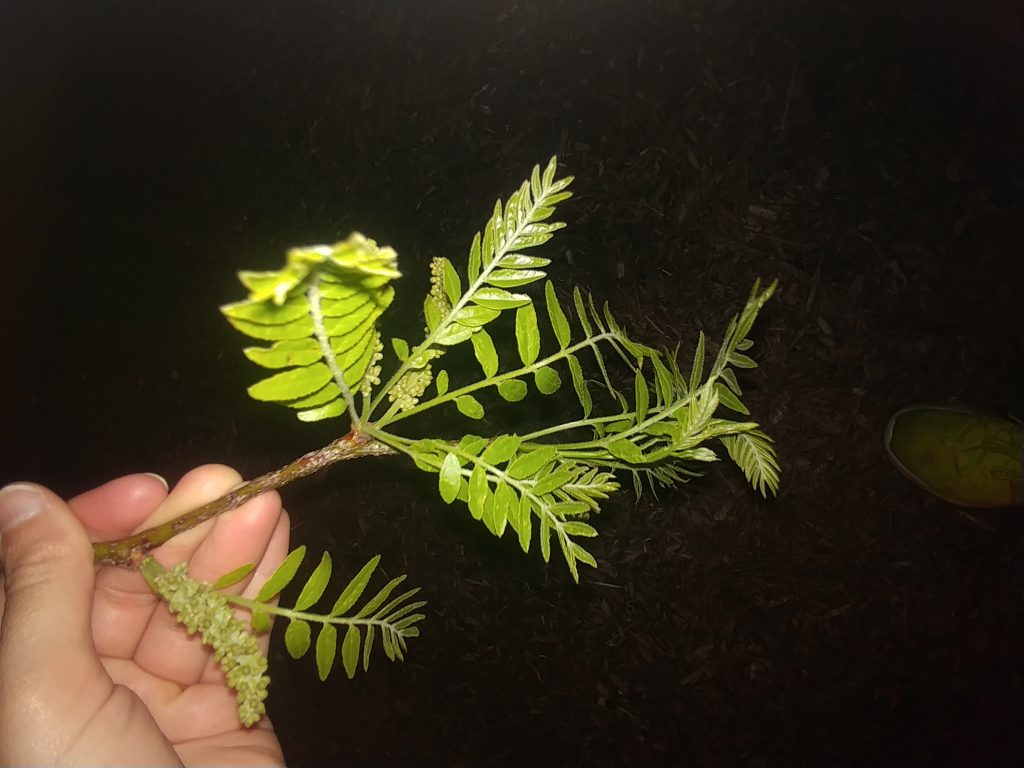
The Honeylocust tree is broadleaf and alternates leaves which are pinnate compound. They have really small leaflets often less than 1 inch without a notch and can also be twice branched. They can also have a long pod that houses the fruit.
This tree was found in wetlands with its roots completely submerged in water, it also was not very close to other trees in the area so I believe that it found one of the only areas with sunlight beneath the undercarriage.
-https://www.arborday.org/trees/treeguide/TreeDetail.cfm?ItemID=852
Something that I learned was that this tree is salt resistant. This means that if this tree is exposed to high amounts of salt, the hypertension will not cause the tree cells to die and it can last through the winter months easier.
I thought that this tree had really cute leaves and I liked how small they were. Fun fact: I nearly fell off the deck in the swamp trying to take this picture.
